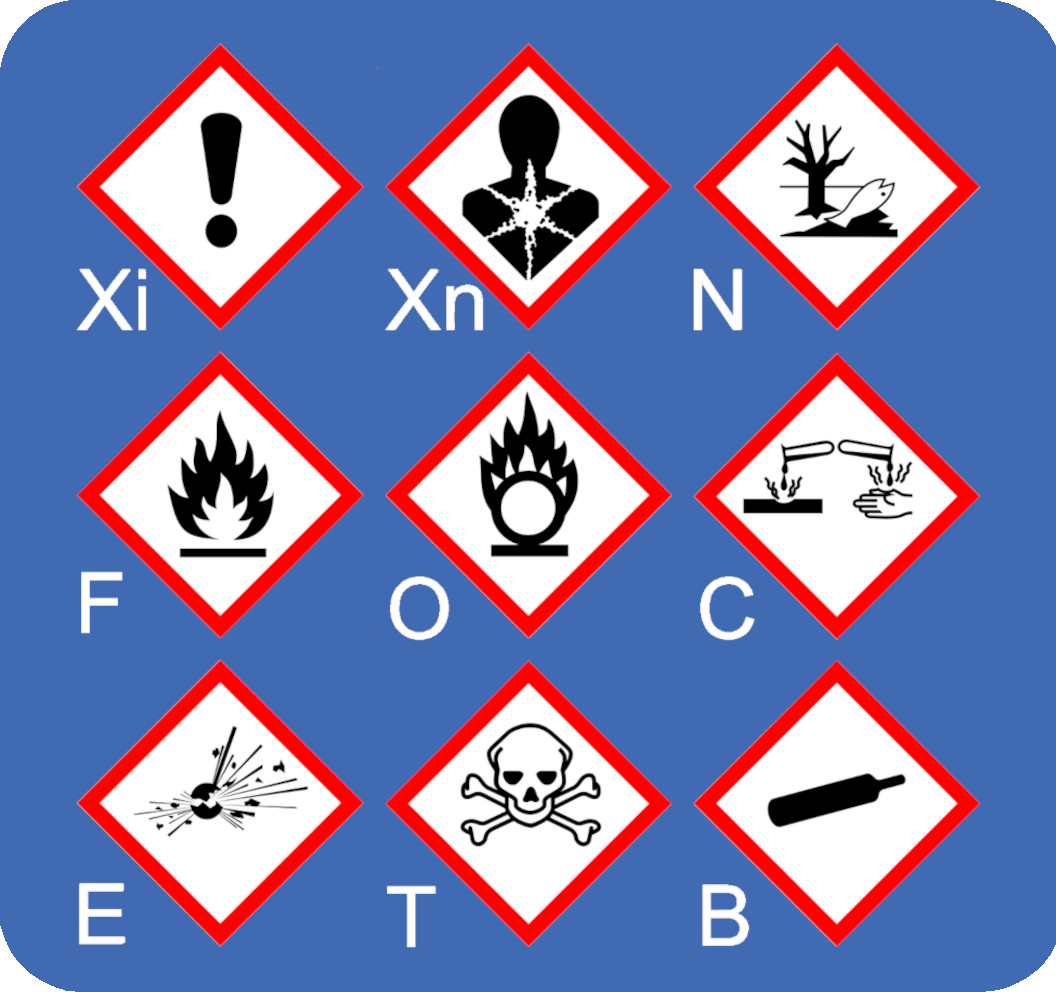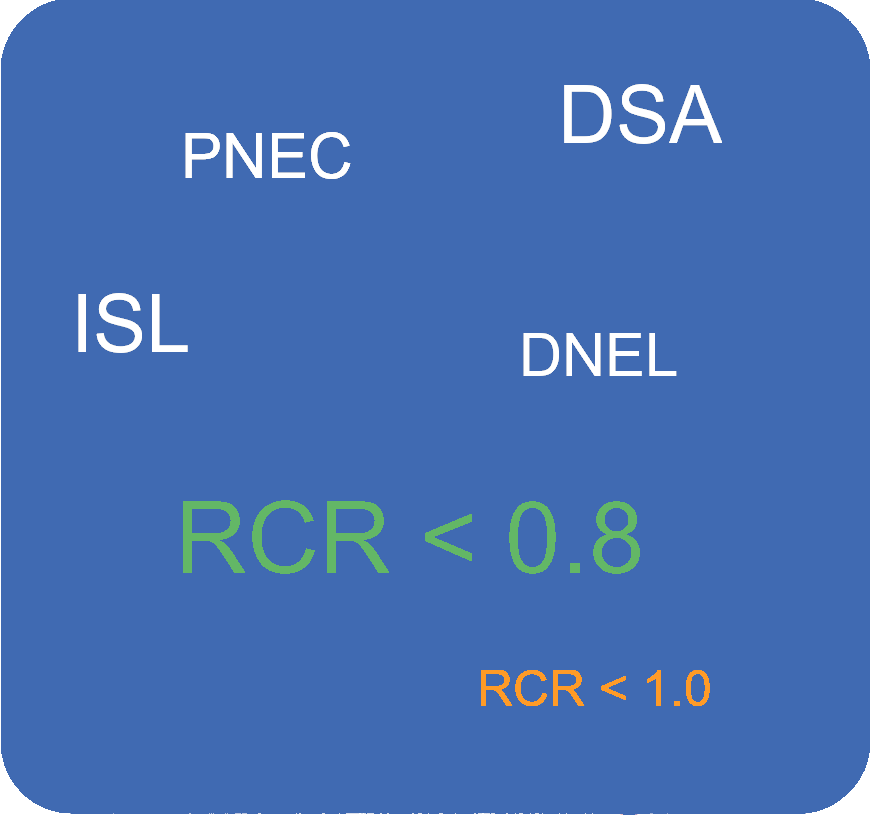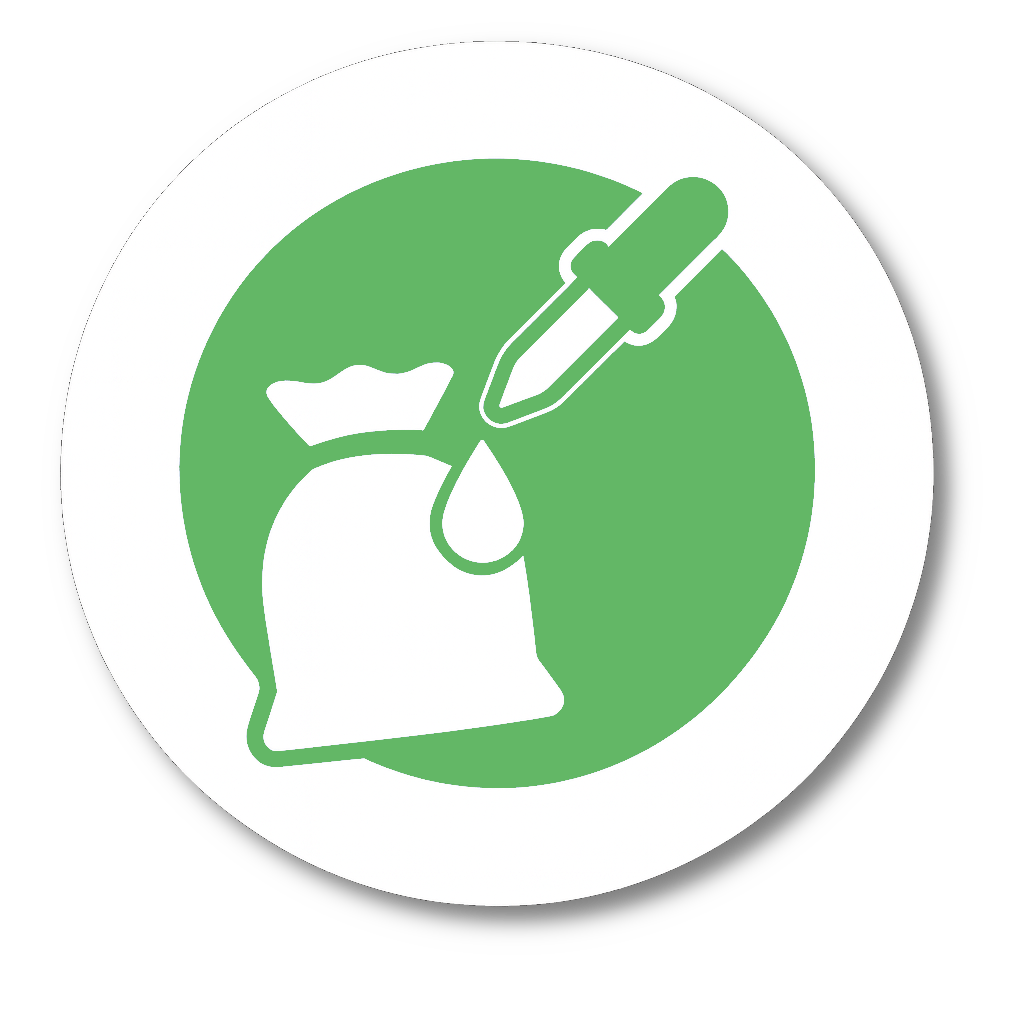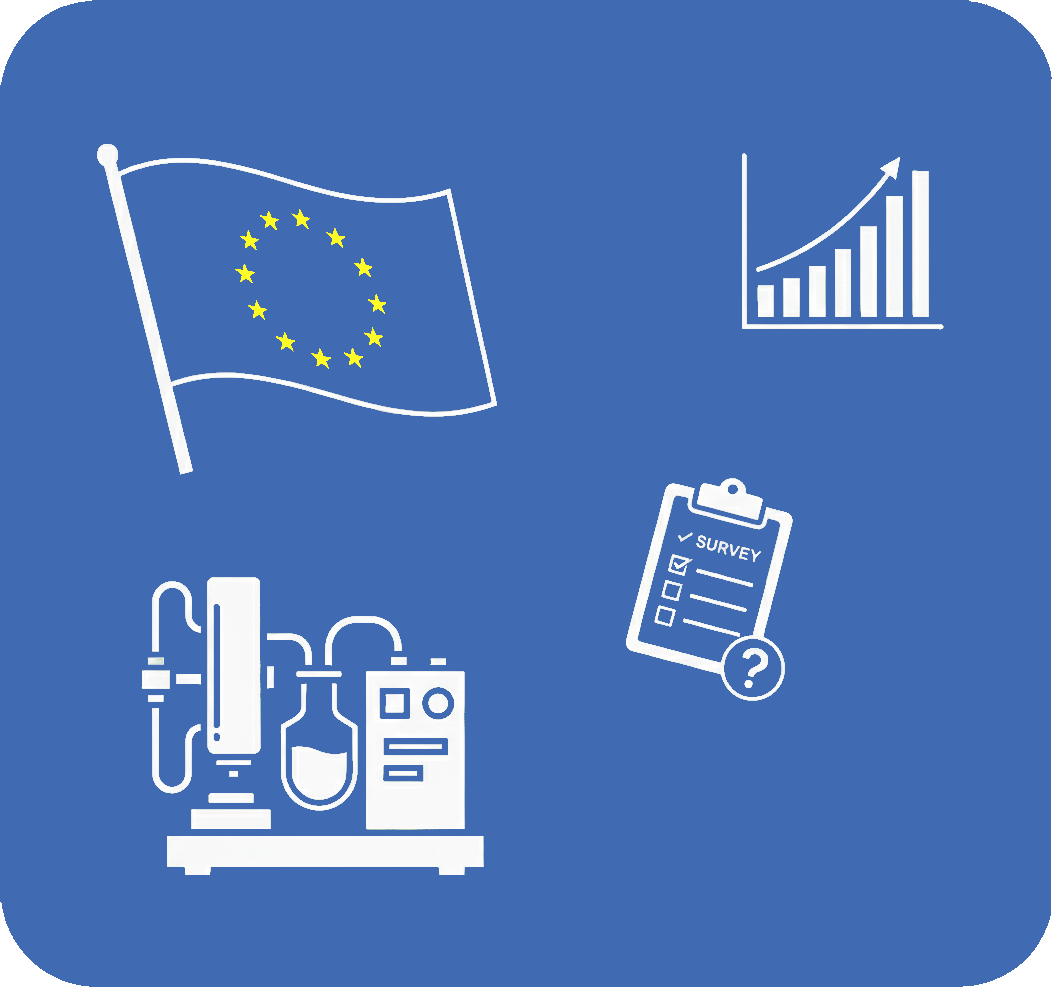Overview
If you are unable to locate a specific service of interest, we encourage you to make use of the search function available in the top navigation bar of our website. Alternatively, you are welcome to contact us directly — our team will be pleased to guide you to the appropriate service or expert.
 Data Gathering & Literature Searches
Data Gathering & Literature Searches

Dealing with scientific data and knowledge is a key component of almost all EBRC services. We are experts in searching published information on substances, topics and concepts. Our sources include published scientific papers, books, theses, regulatory assessment reports, factual (meta) databases and data provided by our clients. Literature and data are archived electronically at EBRC whilst maintaining full confidentiality where needed.
-
Published scientific literature
For comprehensive searches in published scientific literature we use an information provider that aggregates content from approx. 130 authoritative databases, including key chemical, toxicological and biomedical databases such as BIOSIS, MEDLINE, EMBASE, GLOBAL HEALTH and SCISERACH, just to name a few. In addition to scientific papers, our searches can also cover books, theses and newspaper articles. We also use publicly available databases for citation searching, such as Crossref, DataCite, OpenAlex, Semantic Scholar, Google Scholar and Europe PMC.
Search strategies are individually prepared as required for a project, and usually consist of a search for a particular substance or group of substances, and dedicated search terms for the topic.
-
Regulatory reviews and factual (meta) databases
When working on a project about a certain chemical, existing public regulatory reviews and assessments, such as ATSDR Toxicological Profiles, WHO Environmental Heath Criteria, EU EFSA or SCCS assessments, etc. are considered. Key database with regulatory data are searched as well, e.g. ECHA CHEM, US EPA CompTox Chemicals Dashboard, OECD eChemPortal.
-
Proprietary data and studies
Project related data that is provided by the client, including proprietary reports on experimental studies are archived as EBRC whilst maintaining full confidentiality. Non-disclosure agreements can be made, either provided by the client or using a template NDA available from EBRC.
-
Reference manager(s)
For archiving, quick access to literature and easy citation in reports, EBRC uses a reference manager. To ensure confidentiality, this is not connected to the web or to a cloud, but only accessibly within EBRCs secured IT system. References can be imported and exported in all conventional bibliographic exchange formats, including .ris, bibtex, .nbib, .xml, .json to ensure full compatibility with commercial or open-source reference managers (e.g. Mendley, EndNote, Zotero).
 Risk Assessment
Risk Assessment
Risk assessment is more than compliance — it’s the art of translating evidence into safety. We combine regulatory insight with scientific precision to deliver risk assessments that convince both experts and authorities.
 Hazard Assessment
Hazard Assessment

Data Quality Assessment & Data Gap Analysis
-
Critical review of data
Lorem ipsum text or list
- Transparent documentation of evaluation criteria
- Documentation of quality assessment (relevance, reliability, adequacy)
- Expert judgement in case of limited data (read across concepts)
-
Conduct of Studies
- According to EU and OECD guideline
- GLP or non-GLP performances
- Design discussion based on the substance as such, in close cooperation with the client and contract laboratories
- Coordination & Monitoring
- Interpretation of results
- Defending study results towards competent authorities
- Further processing for REACH
Physical Chemical Properties
- Test design modification for metals
- Differentiation bulk & nano form
Human Health
- POD identification (e.g. benchmark-dose modelling)
- Mode of Action / AOP frameworks
- Expert inhalation toxicology (dosimetry, HEC, overload)
- NAM testing coordination (incl. respiratory effects)
- Critical review for regulatory defence
- Leading expert panels for targeted assessments
Environmental Fate
-
Kinetic modelling and endpoint derivation
- Kinetic analysis of degradation and dissipation rates from laboratory soil and field trials as well as water / sediment systems according to guidance of the FOCUS Work Group on Degradation Kinetics
- Normalisation of environmental fate data and decision making on the required endpoints as model input parameters
- Critical analysis of existing input parameters and potential refinement or update as required by updated guidance
- Metal-specific assessment of bioaccumulative effects considering essentiality of macro- and microelements (if applicable)
- Compilation of metal-specific background concentration data across Europe
- Derivation of partition coefficients (Kp)
- Fate assessment of engineered nanoparticles according to REACH requirements
Ecotoxicology
- Derivation of predicted no effect concentrations (PNEC)
- Species sensitivity distribution (SSD)
- QSAR analyses
- Planning/Monitoring of laboratory- and higher-tier studies
- Aquatic hazard classification according to CLP Regulation
- Critical review for regulatory defence
- Expert statements, including endpoints beyond standard data requirements (phototoxicity, particle effects)
Endocrine Disrupting Properties
-
Full assessment of endocrine disruption (ENV/HH) according to ECHA/EFSA Guidance & CLP Guidance
- Targeted literature search
- Data base screening (US EPA CompTox Chemicals Dashboard, ToxCast)
- Reliability assessment (ToxR tool, CRED) & Nano scoring (Card & Magnuson, 2010)
- Assessment of EATS & non-EATS modalities using Appendix E (ECHA/EFSA Guidance) or other formats
- Assembling/integrating lines of evidence & weight of evidence analyses
- Mode of Action Analyses
- Consultation of AOP databases (AOPwiki, OECD, U.S. EPA)
- Conclusions on classification according to EU CLP Regulation / Conclusion on the ED criteria for the determination of endocrine-disrupting properties pursuant to the Biocidal Products Regulation (EU) and the Plant Protection Products Regulation (EU)
- Monitoring and support in the conduct of studies relevant to the endocrine disruption assessment
- Holding seminars on endocrine disruption for specific groups, e.g. the metalworking industry
PBT/vPvB, PMT/vPvM Assessment
- Monitoring and support in the conduct of e.g. dietary exposure studies for (v)B evaluation
- Expert statements (physico-chemical substance properties, regulatory borderline cases)
 Exposure Assessment
Exposure Assessment

Occupational Exposure Assessment
Protecting workers begins with understanding real exposure. We assess workplace scenarios using measured or modelled data, integrating toxicological thresholds, use patterns, and task-specific factors. The result: defensible conclusions that balance realism with regulatory acceptance.
Key disciplines are:
-
Generation of exposure data
We collect exposure information via two coordinated channels. A targeted, questionnaire-driven intake invites companies to share existing monitoring results with essential context (tasks, SEG definitions, control measures, operating patterns). In parallel, we gather site-specific intelligence to understand real workflows, controls in use - pinpointing where new measurements add the most value.
With this evidence, we select representative sites and co-design a pragmatic campaign: stratifying by similar exposure groups, process category, and controls; confirming feasibility in brief interviews; and agreeing on task-based or full-shift sampling, worker/shift counts, and needed replication to capture variability. All information is processed under strict GDPR compliance, minimizing identifiers and safeguarding data throughout.
-
REACH Use Descriptions
Content
-
Exposure Scenario building
Effective risk management starts with the well-defined exposure scenario. We develop use- and task-specific scenarios that reflect real operational conditions while meeting regulatory expectations. Each scenario integrates substance properties, process parameters, and control measures — a solid basis for realistic exposure and risk assessments.
Environmental Exposure Assessment
In context of the EU Plant Protection Products Regulation, EU Biocidal Products Regulation and REACH Regulation.
- Collection of information
- Development of exposure scenarios
- Estimation of environmental exposure concentration and risk characterisation for relevant protection targets
-
Modelling applications & software
- Current FOCUS models for estimating environmental concentrations (e.g. PEARL, PELMO, MACRO, PRZM, TOXSWA)
- EUSES integrated in Chesar/Chesar Platform (for the estimation of environmental concentrations for protection targets of industrial chemicals)
- Biocides (EUSES and Emission Scenario Documents)
-
Model refinements
- For Plant Protection Products:
- Impact estimation based on potential future exposure models such as PERSAM or updates to existing models
- Additional qualitative exposure estimations as required
- Implementation of accepted risk mitigation measures based on specific zonal or country-specific guidance
- Refinement of predicted environmental concentrations (PECs) based on existing or newly generated data
- Use of EU-member-state-specific exposure models (e.g. EXPOSIT, EVA, FROGS, GeoPEARL)
- Analysis of the temporal patterns of predicted environmental exposure for additional refinement over standard FOCUS approaches incl. our own tools
- Probabilistic and GIS-based approaches for exposure predictions in close cooperation with the applicant and / or the competent authority
- For Industrial Chemicals:
- Release factor based on sector-specific information or OECD ESD
- Site-specific measured data (monitoring campaign)
- Regional assessment based on monitoring datasets (if available)
- For Biocides:
- Implementation of acceptable risk mitigation measures based on the guidance
- Refinement of predicted environmental concentrations (PECs) based on existing or newly generated data
- Additional qualitative exposure estimations as required
- Proposal for risk management/mitigation measures (RMMs)
- Documentation and communication
- Documentation and communication
Consumer Exposure Assessment
The REACH regulation requires companies to comprehensively understand and document the exposure pathways and specific conditions under which consumers can safely handle products or articles containing their substance. This involves conducting representative assessments that describe both the presence of the substance in mixtures or articles and its concentration levels. In addition, it is essential to provide a comprehensive description of the intended conditions of use, while the provision of personal protective equipment is not envisaged. In certain instances, a tiered approach, ranging from default generic values to refined, use-specific scenarios, is imperative to demonstrate safe use of a consumer product/article.
EBRC provides the following services for companies to meet their regulatory obligations.
- Collection of relevant product/ articles specific information
- Consideration of exposure potential per route for the respective consumer use/ article
-
Development of exposure scenarios and defining conditions of use:
- Using defaults in ECETOC TRA
- Using published data and read-across from analogue substances
- Using information from RIVM fact sheets
- RAC opinions on metal compounds used by consumers or included in articles
- EU risk assessment reports
-
Estimation of consumer exposure concentration and risk characterisation for relevant routes
- ECETOC TRA (1.Tier for inhalation, dermal and oral route)
- ConsExpo
- Using monitoring data (incl. analogous and published)
- o Use of own models built on plausibility considerations and experience
Humans via the Environment Assessment
The “Humans via the Environment” assessment is required for hazardous substances when the annual tonnage exceeds 1,000t, or when it is over 100t per year and the substance is classified as STOT RE1, carcinogenic, mutagenic (any category), or reproductive toxicant (category 1A or 1B). The assessment will be performed at a local level—focusing on direct, site specific exposures—or at a regional level, which considers broader geographic areas.
In both approaches, human exposure through environmental media, specifically food, drinking water, and air, are quantified in order to demonstrate compliance with REACH safety requirements.
- Estimation of environmental exposure concentration (food, water and air) and risk characterisation for humans
-
Modelling applications & software
- EUSES integrated in Chesar/Chesar Platform (for the estimation of environmental concentrations for protection targets of industrial chemicals)
-
Model refinements
- Release factor based on sector-specific information or OECD ESD
- Site-specific measured data (monitoring campaign)
- Regional assessment based on monitoring datasets (if available)
-
Inorganics/ Metal specific adaptations:
- Current version of EUSES (or Chesar) is not suitable to estimate concentrations in crops, meat and milk as transfer models are based on Kow.
- Instead, duplicate diet studies, total diet studies or market basket studies will be used to address the uptake of metals via food.
- Drinking water, and inhalation can be addressed via EUSES.
 Risk Characterisation
Risk Characterisation

Sound conclusions depend on clear integration of hazard and exposure data. We derive and interpret risk characterisation ratios using transparent assumptions and robust uncertainty analysis. The outcome: defensible conclusions that support regulatory acceptance and practical risk management.
 Regulatory Dossiers & Submission
Regulatory Dossiers & Submission
EBRC has long year experience in dossier compilation and submission within several legal frameworks. EBRC supports individual companies, lead-registrants and co-registrants as applicable. The table below gives a short overview over the represented industry branches and their individual peculiarities. Sector specific services are available in the respective section further below.
| Area |
 Agrochemicals
Agrochemicals
|
 Biocides
Biocides
|
 Industrial Chemicals
Industrial Chemicals
|
 Food Additives
Food Additives
|
 Cosmetics
Cosmetics
|
|---|---|---|---|---|---|
| Services applicable to all branches | Pre and post submission support | ||||
| Special Services | Active substances, Formulations, BAD | TODO | Consortia management, REACH-IT, surveys, strictly controlled conditions | TODO | TODO |
| Legal Framework | TODO | BPR (EU) 528/2012 | “REACH” Regulation (EC) No 1907/2006 & “CLP” Regulation (EC) No 1272/2008 | TODO | TODO |
| Interaction with Authorities | TODO | TODO | European Chemicals Agency (ECHA), EU Commission (EC), Member State Competent Authorities, National/Regional/Local enforcement agencies | TODO | TODO |
| Dossier Types | TODO | TODO | REACH: Inquiry, Registration, Application for Authorisation, PPORD Notification CLP: Notification to the C&L Inventory, Proposal for Harmonised Classification and Labelling (CLH) | TODO | TODO |
| Tools & Formats | TODO | TODO | IUCLID, CHESAR, Chemical Safety Report (CSR) | TODO | TODO |
 Compliance & Documentation
Compliance & Documentation

Classification & Labelling (C&L)
- EU CLP Regulation
- GHS
- Evaluation based on all available information, i.e., phys-chem / human health / environment and relates to all endpoints
Safety Data Sheets (SDS)
- Generation according to REACH Annex II and ECHA guidance on compilation of SDS, respectively
- Generation of exposure scenarios as annex (CHESAR)
 Special Services
Special Services

Task Force, Joint submission & Consortia Management
-
General consortium management
Communication and correspondence with consortium members and joint submission members/ LoA buyers, budget planning and monitoring budget compliance, review and payment of incoming invoices, regular updating of cost allocation/ cost itemisation, archiving/ documentation, maintenance of website collaboration with the REACH manager and CEO, liaison to external service provides such as the bank, tax accountant and tax authorities, lawyers, review their work such as tax declaration, annual balances, proof of shareholding. Adaptation of contracts and agreements (with external legal support as applicable). Preparation and leading of annual meetings (online, face-to-face, or hybrid), writing of minutes.
-
Cost sharing/ reimbursement exercise
Regular substance inventory, cost allocation, update calculation files, preparation of invoices to registrants, follow up on payments and inquiries.
-
Letter-of-access and Licence to Use management
Email communication with interested parties prior to the LoA purchase, addressing questions on the procedure, preparation of agreements, invoicing, preparation of data packages, calculation of individual cost shares for single study requests (LtU). May involve communication and collaboration with stakeholders in connection with other REACH-like jurisdictions, including UK REACH, KKDIK etc.
-
External representation
Representing the Consortium in their communication with industry, professional and governmental organisations (notably the European Commission, the European Chemicals Agency, ECHA, and national competent authorities).
-
Technical activities
Organisation of meetings of technical working groups as may be formed from time to time and taking/issuing minutes thereof. Provision of support to technical working groups, lead registrants, etc. Oversight of technical programme development and implementation thereof by consultants, laboratories, etc.
-
Task force
Leading and supporting task forces to address complex regulatory challenges. Expert in coordinating multidisciplinary teams, developing strategic action plans, and providing science-based guidance to ensure compliance and proactive risk management. Skilled in regulatory defence, supporting companies and legal teams in responding to authority actions and defending dossiers with robust scientific evidence. Recognized for bridging technical expertise with regulatory foresight to drive consensus and effective decision-making.
Special Analytics (conducted by sub-contractor)
-
Nano
- Requested characterisation according to REACH, SCCS, EFSA (constituent particle size)
- Dispersion stability
- Quantification in biological samples
- Biological relevant PSD for read across approaches (non-separable particle size)
- Biological in vitro test systems for read across approaches
- Potential bioavailability (Transwell assay)
- Inflammatory potential (Macrophage assay/ROS assay/lung endothelial assay)
- Potential developmental toxicity (e.g. EST assay)
- Trace analysis
- Spectroscopic methods (NMR, IR, UV, MS, XRD, XRF, EM, …)
- Metal analysis (ICP-MS/OES)
Data Management & Bio-Statistics
Reliable conclusions start with reliable data. We structure, validate, and analyse datasets to uncover patterns that matter — from experimental design to final interpretation. Our biostatistical expertise includes resampling, trend and dose–response modelling, and uncertainty quantification, all within transparent and reproducible workflows.
Tailored Online Surveys
Complex regulatory questions often require solid, real-world data. We design and conduct online surveys that capture substance uses, workplace exposure information, and material specifications across Europe. From translating scientific questions into clear survey logic to follow-up on responses, evaluation, and interpretation, we manage the entire process. The outcome: robust, transparent data that strengthen regulatory submissions and risk assessments.
Tool Development
We develop industry-grade tools for the chemical sector—for example, exposure-estimation engines, demonstrators that document compliance with strictly controlled conditions, and cost-to-target planners that quantify the effort needed to reach limit values. Depending on the use case, we deliver solutions in Excel, as stand alone applications or as modern web apps. Combining scientific scope, statistics, and software engineering, we turn ideas into validated prototypes and then into robust, well-documented products — fast, reliable, and ready for real-world decisions.
Further Scientific & Regulatory Support
-
Socio-economic analysis & impact assessment
Regulatory decisions require a balance of evidence, context, and communication. We provide scientific support throughout decision-making processes — from socio-economic analyses and impact assessments of potential regulatory measures to substance classification and the derivation of occupational limit values.
Our work includes evaluating the economic and technical feasibility of proposed actions, helping to ensure that science-based decisions remain both effective and proportionate. We bridge data and policy, translating complex evidence into arguments regulators can trust.
-
QSAR calculation
- Use approved QSAR models and other valid and suitable tools to comprehensively screen and analyse physicochemical, ecotoxicological, and toxicological aspects and endpoints and to address dossier gaps in compliance with regulatory requirements (e.g., REACH, EFSA)
- Comprehensive documentation for regulatory purposes (OECD)
- Considering available methods, specified parameters and metabolic pathways to strengthen the overall picture when assessing substances in terms of potential risks
- Selection of tools/applications: OECD/ECHA QSAR Toolbox; US EPA EPI Suite; PBT Profiler; TOXTREE
- Publication in scientific journals
- Training courses
- Support in legislative processes
- Authorisation
- Restriction
- OEL setting (EU & national)
- Guidance development